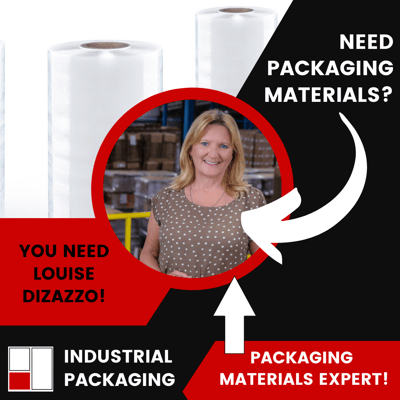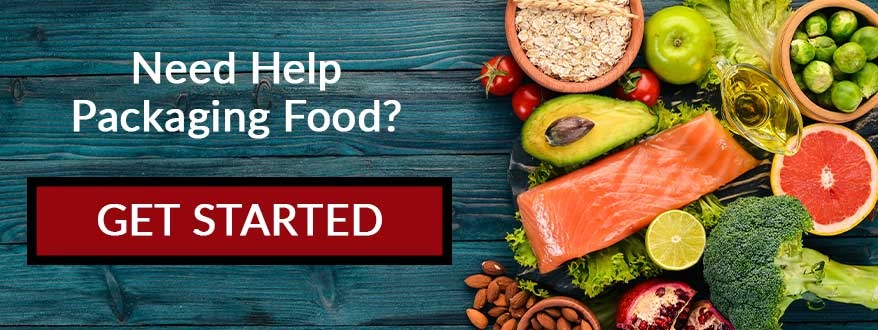Exploring The Different Types Of Food Packaging Materials
Maybe you are a chef looking to bring your recipes to the retail frozen food market for distribution via supermarkets. Or, perhaps you are a food manufacturing company looking for new and innovative ways to package your products.
Then again, you may be the owner of a food truck, and you are looking for new containers for your tasty offerings. The possibilities are endless.
Whatever it is that brought you here today, one thing is clear. You are looking to explore the vast selection of food packaging materials to source the proper packaging supplies for your food products.
Now, you could always punch "food packaging" into google and browse page after page of descriptions. But, wouldn't it be great if there was a comprehensive list of food packaging materials in one easy-to-navigate place?
Ask, and you shall receive!
With multiple decades in the food packaging industry, Industrial Packaging has seen it all. We are well versed in the different types of food packaging supplies currently available on the market.
We have helped countless food industry professionals source the appropriate food packaging materials. And, we can do the same for you!
This article will review a selection of top food packaging materials. When you are finished reading this article, you will be able to choose the correct food packaging materials for your business.

What Are The Different Types Of Food Packaging Materials?
To say that the world of food packaging is a galaxy or even an entire universe unto itself is the understatement of the year. Indeed, the vast plethora of options when it comes to food packaging supplies is mind-boggling!
As such, we won't be able to cover everything this universe has to offer in this post. Instead, we will focus on the most popular food packaging items consumers faithfully purchase day after day, year after year.
Here, we will explore a collection of both flexible and rigid forms of food packaging. We will discuss packaging materials that are both earth-friendly and, in some cases, not so much.
In the section below, our journey through the cosmos of food packaging materials begins. Come with me, and together we will explore this universe.
1. Flexible Pouches
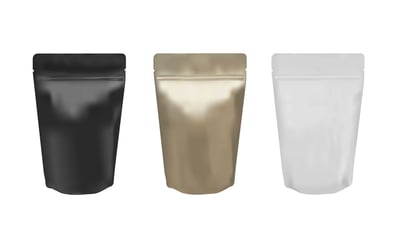
Flexible pouches are one of the fastest-growing segments of food packaging today. For the most part, consumers absolutely love them. In fact, the global flexible pouches market is currently estimated at around USD 53.7 billion in 2021. And, the market is expected to soar to USD 73.5 billion by 2026!
So what's all the hype about? Why do both food manufacturers and consumers love these pouches so much?
First of all, these pouches are environmentally friendly. In fact, like most flexible packaging supplies, they have a significantly lower carbon footprint than the majority of alternative packaging materials such as glass, metal, cardboard, and hard plastic. Flexible pouches also take up much less space than these alternative items in the landfill.
But sustainability is not the only reason flexible pouches (also known as stand-up pouches) are so popular with food producers and consumers alike.
Food manufacturing companies love these pouches because they are much less expensive than the majority of the alternative materials mentioned above. They are also much lighter, which translates to significantly less expensive shipping costs.
Consumers love flexible pouches for many reasons. In addition to being shatter-resistant, they often have unique features that other packaging materials don't. For example, many flexible pouches feature clear plastic windows, allowing you to see the food product within before you purchase it.
As a flexible packaging supply, you can also inspect the products contained within and feel the texture of the food with your hands. In addition, flexible pouches also often feature valves that serve a two-fold purpose.
Most commonly found on coffee packaged in gusseted flexible pouches, package valves keep oxygen from getting into the bag and spoiling the product. But, they also allow air to escape the pouch. This enables consumers to smell the different varieties of coffee which makes for a more interactive and enticing customer experience.
Finally, stand-up pouches can be fully printed 360 degrees around the package with bright colors, unique typography, graphics, logos, and product information. This makes them very eye-catching to consumers. With the scent, sight, and touch features mentioned above, it is no wonder that flexible pouches are taking the world by storm!
2. Glass Jars And Containers
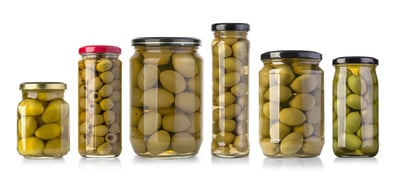
Glass jars and containers are well-known, and much loved forms of food packaging material. For over a hundred years, glass has been extremely popular with consumers.
Many food products packaged in glass have extensive shelf lives and boast an air of luxury when compared to many other types of packaging materials.
Since glass jars and containers are generally transparent, the packaging allows consumers to see the product inside the container. This allows them to inspect the product before making a purchase.
Another significant draw to glass for consumers is the fact that glass is 100% recyclable. With that being said, it should be noted; glass has an extremely high carbon footprint.
Depending upon the logistics of where the products are being shipped, the carbon footprint may negate the earth-friendly aspect of its recyclability.
This is due to the heavier weight of glass which also makes it notably expensive to ship. As glass is a solid form of rigid packaging, it also takes up more space on the truck during transportation. This equates to fewer packages per shipment and further increased costs for shipping.
Finally, with glass, there is another problem for both consumers and manufacturers.
Glass's propensity to shatter when dropped or struck make it a potentially messy cleanup should you accidentally drop or break the container. Additionally, broken glass can be harmful or dangerous.
3. Clamshell Packaging
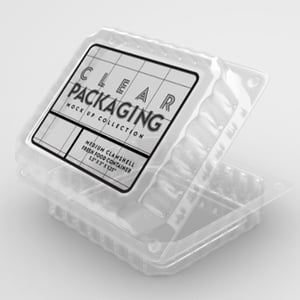
Clamshell packaging is a member of the carded packaging family. Clamshells are most commonly used for food packaging. Still, they are also popular in consumer goods, often used in place or in tandem with blister packs (another member of the carded packaging family).
Clamshells are often made from plastic, paperboard, recycled paper, plant-based materials, or styrofoam. A clamshell features two "shells" (made from one of the materials mentioned above). The shells are connected on one side, while the other side features some type of clasp or nob that can be used to lock and unlock the container.
Clamshells are commonly used for packaging sandwiches, salads, produce, chicken wings, BBQ ribs, and other foods and consumer products such as fishing lures or hardware.
Clamshells can be found at supermarkets, food trucks, food marts, gas stations, salad bars, serve-yourself hot food bars, country stores, hardware stores, and various other food and consumer goods retailers.
The recyclability of clamshells is dependent on the type of material that the container is made from. For example, plastic clamshells, which are most commonly made from PET plastic, are entirely recyclable. Plant-based clamshells, on the other hand, while compostable (in an industrial composting facility) are not.
4. Metal Cans
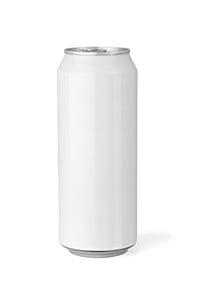
Like glass, metal cans have been a staple of packaging supplies for over a hundred years. In fact, tin cans dating back to the 1920s and beyond are often coveted collector's items.
Mostly made from tin or aluminum, metal cans remain an extremely popular packaging supply to this day. This is primarily because they are 100% recyclable, reasonably affordable, and have superior shatter resistance compared to glass.
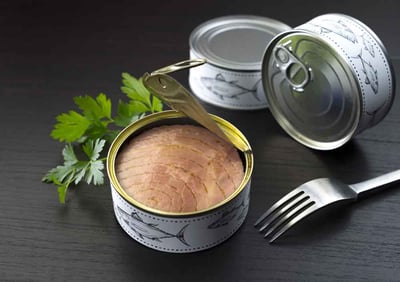
Tin cans are mainly used for packaging food such as fish, chicken, beef, pork vegetables, sauces, and soups. Meanwhile, aluminum cans are more commonly used for packaging beverages such as beer, soda, energy drinks, and, more recently, water.
As previously mentioned, tin and aluminum are entirely recyclable. However, they both feature higher carbon footprints than alternative materials such as flexible packaging.
Furthermore, suppose the cans are not cleaned of food or liquid particulates and labels and adhesives before being recycled. In that case, they will ultimately be sent to the landfill.
Need help finding the right food packaging materials?
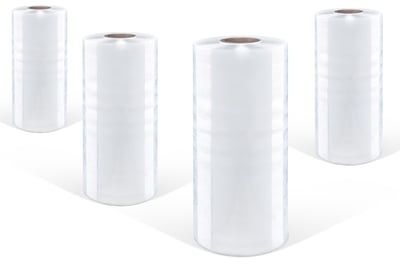
5. Shrink Film
Shrink film is a transparent plastic film that shrinks uniformly when heated. When using this material, the product is packaged inside of a clear sleeve made from shrink film. Each side of the sleeve is sealed shut with a heating element on a device called a sealer.
Next, the sleeved product moves via a conveyor belt through a machine called a heat tunnel. In the tunnel, a heating element heats the film, causing it to shrink uniformly around the product.
This gives the final product a nice glossy sheen which beautifully reflects light in an eye-catching way while awaiting the consumer, sitting on store shelves.
Shrink film has many applications, including packaging for frozen and non-frozen food, electronics, board games, DVDs, CDs, video games, and many other consumer goods.
Some formulations of shrink film are recyclable, while others are not. Biodegradable shrink films that are made from plant-based materials are also available.
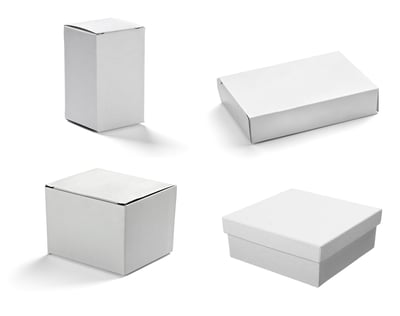
6. Paperboard Boxes
If you have ever purchased a twelve-pack of canned beer or soda, you are familiar with paperboard boxes. Paperboard boxes are a thinner cousin to corrugated boxes. They are trendy packaging materials used for a wide variety of product packaging applications.
Paperboard boxes are made from (as you might expect) paperboard. But, what exactly is paperboard?
Paperboard is a paper-based material that is thinner than cardboard but thicker than paper. Paperboard boasts superior attributes to paper, including enhanced rigidity.
Paperboard boxes are used for packaging all sorts of products, including cereal, crackers, snacks, soup mix, canned beverages, pasta, meal kits, monthly club kits, and many other types of food and consumer goods.
Paperboard is fully recyclable if it is not stained with liquids or food particulates and features a lower carbon footprint than metal and glass.
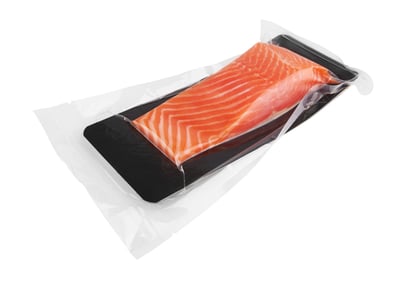
7. Skin Packaging
Skin packaging (also known as skin packs) is another fantastic form of carded packaging that has become a staple at your local supermarket. Skin packaging is a paperboard backer called a skin board on which the product being packaged is placed.
Next, the skin board is covered with surlyn film or skin poly film. Finally, the product is vacuum-sealed shut. This results in the air being removed from the package and the film tightly forming around the product.
Skin packs are commonly used for packaging fish, beef, chicken, pork, car parts, tools, hardware, and many other consumer products.
As a flexible packaging supply, skin packaging has a much lower carbon footprint than many popular packaging material alternatives. They take up much less space in the landfill and are lighter than rigid packaging supplies.
Due to their light weight and lower materials usage, you can fit more products on your trucks. The shipping cost is much lower when compared to packaging supplies such as glass, metal, and cardboard.
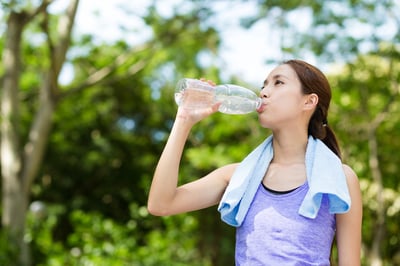
8. Plastic Bottles
Plastic bottles can be found in almost every retail environment. They are clear plastic containers that feature a plastic cap. After the cap has been removed, it can be screwed back onto the container to store the unused portion of the product.
If you have ever had bottled water, then you are familiar with these widespread packaging materials. Plastic bottles are primarily used for packaging beverages such as spring water, iced tea, iced coffee, seltzer water, soda water, mineral water, and various other types of drinks.
While most plastic bottles are recyclable, they often end up in the landfill due to the labels and adhesives not being removed or because of food contamination during the single-stream recycling process.
Despite the various concerns that the public has over the environmental repercussions of plastic, they are still extremely popular as beverage containers with millions of consumers the world over.
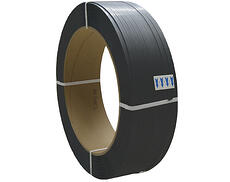
9. Strapping Material
Strapping material is a common food packaging material. Still, you won't find it on many if any products at the supermarket. That's because strapping is primarily used to secure pallets of boxes packed with the products that go on the shelf.
Strapping keeps the boxes of pallets stacked and uniform during transportation and helps prevent the pallets from collapsing during shipping.
Strapping is commonly used for packaging boxes of frozen seafood and snacks. It is also widely used for similar applications for boxed products, including books, board games, and boxes of other types of consumer products.
Some strapping formulations are recyclable, while others are not. As a flexible packaging supply, strapping boasts a very low carbon footprint and is also available in printed formats.
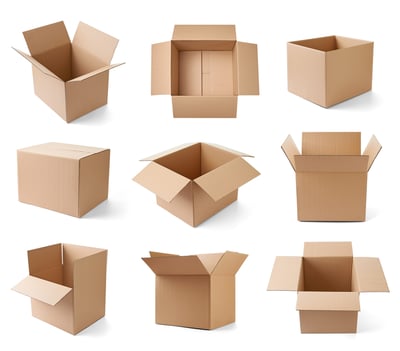
10. Corrugated Cardboard Boxes
Finally, we have corrugated cardboard boxes. If you have ever bought a case of wine, then chances are, you have had carried it out in a corrugated cardboard box. Additionally, if you have ordered products from Amazon, you probably have a pile of these boxes somewhere in your house.
Corrugated cardboard boxes are ubiquitous in the food packaging supply chain. Countless products are pre-packaged before being put into a cardboard box for shipping.
Next, the boxes are stacked on pallets and secured (usually with strapping or stretch film). Once they have been secured, they are loaded onto a truck for transportation.
Corrugated cardboard boxes are used for packaging frozen seafood, snacks, beverages, electronics, office equipment, and countless other consumer goods.
Are You Looking For Food Packaging Materials For Your Business?
While the list above reflects some of the most popular food packaging materials on the planet, it is by no means a reflection of all the currently available food packaging supplies.
Are you looking for packaging materials for your food packaging requirements? If so, you may or may not have found the packaging you are looking for in the article above.
Either way, you probably have questions about the materials you did or did not find while perusing this information. Would you like to find the perfect food packaging materials and related information for your business?
If you said yes, then you will want to consider clicking the link below. There you will find all the information you need regarding food packaging materials and services. If you do not see what you are looking for, simply reach out to one of our packaging experts. They will help you find suitable materials, even if you do not buy them from us!
About Nathan Dube
As the Digital Marketing Specialist at Industrial Packaging, I am honored to create content for such a phenomenal company and work with one of the greatest teams in the Packaging Industry. Whether creating a video, writing blog posts or generating other pieces of content and multimedia, I am always excited to help educate and inspire our prospects and clients to reach their highest potential in regards to their packaging processes and needs.




